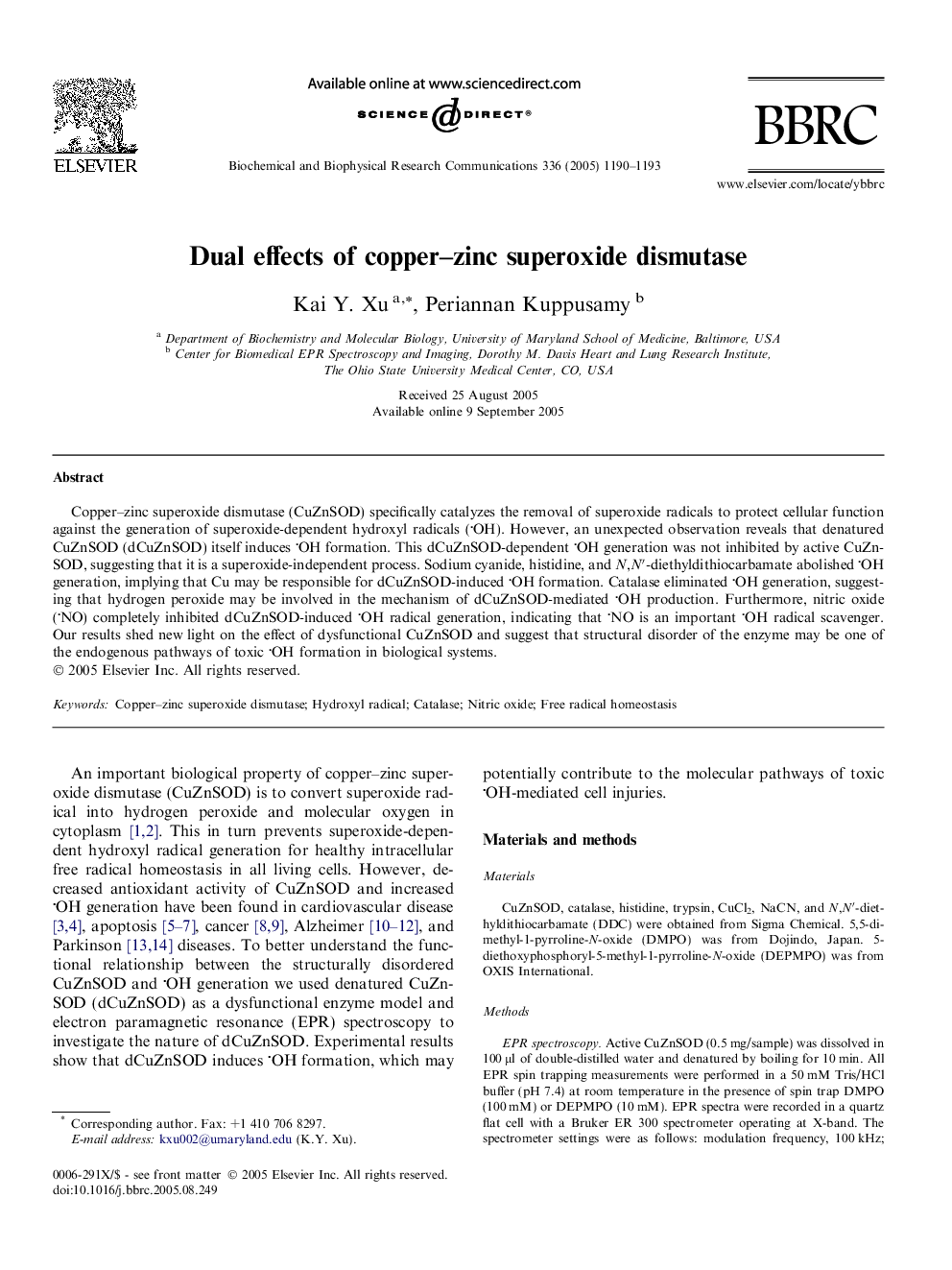| Article ID | Journal | Published Year | Pages | File Type |
|---|---|---|---|---|
| 10767773 | Biochemical and Biophysical Research Communications | 2005 | 4 Pages |
Abstract
Copper-zinc superoxide dismutase (CuZnSOD) specifically catalyzes the removal of superoxide radicals to protect cellular function against the generation of superoxide-dependent hydroxyl radicals (OH). However, an unexpected observation reveals that denatured CuZnSOD (dCuZnSOD) itself induces OH formation. This dCuZnSOD-dependent OH generation was not inhibited by active CuZnSOD, suggesting that it is a superoxide-independent process. Sodium cyanide, histidine, and N,Nâ²-diethyldithiocarbamate abolished OH generation, implying that Cu may be responsible for dCuZnSOD-induced OH formation. Catalase eliminated OH generation, suggesting that hydrogen peroxide may be involved in the mechanism of dCuZnSOD-mediated OH production. Furthermore, nitric oxide (NO) completely inhibited dCuZnSOD-induced OH radical generation, indicating that NO is an important OH radical scavenger. Our results shed new light on the effect of dysfunctional CuZnSOD and suggest that structural disorder of the enzyme may be one of the endogenous pathways of toxic OH formation in biological systems.
Related Topics
Life Sciences
Biochemistry, Genetics and Molecular Biology
Biochemistry
Authors
Kai Y. Xu, Periannan Kuppusamy,
